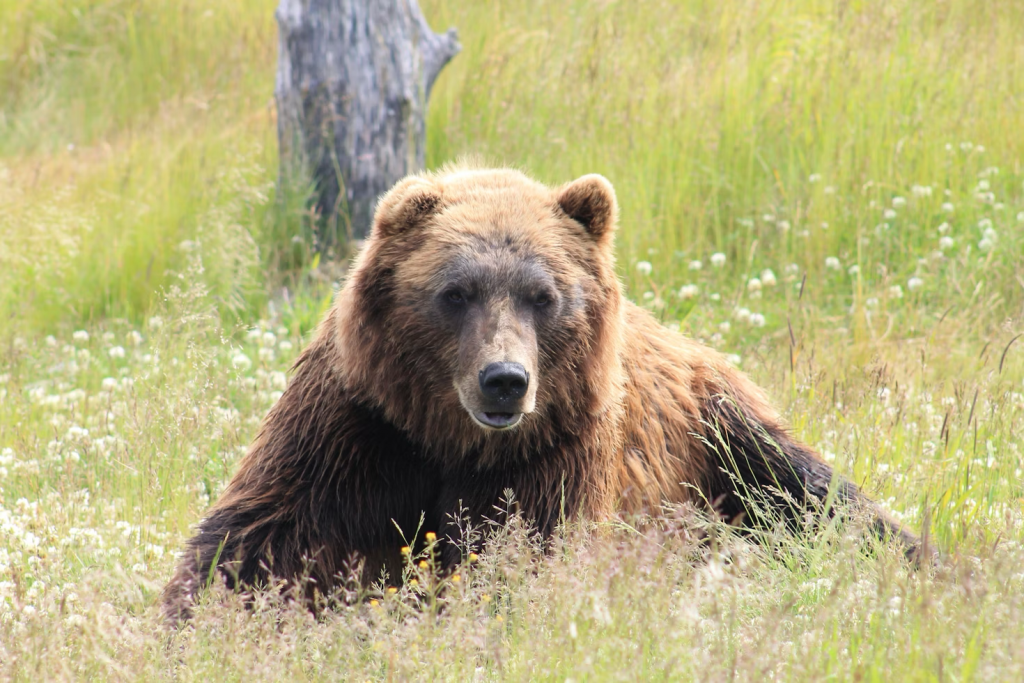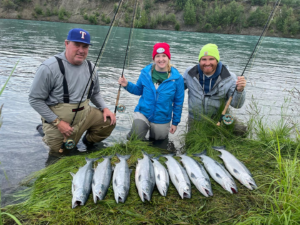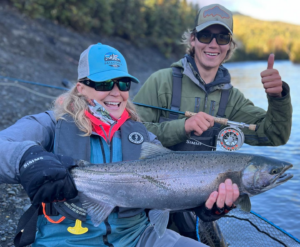The Kenai Peninsula’s wilderness is a haven for both anglers and wildlife, offering a unique opportunity to experience the thrill of fishing amidst stunning natural beauty.
However, this pristine environment is also home to a variety of wildlife, including bears. It’s important to be prepared and take necessary precautions to ensure a safe and enjoyable experience for both yourself and the bears.
In this guide, we’ll delve into essential bear safety tips, equipping you with the knowledge and awareness to navigate the Kenai River with confidence.
Understanding Bear Behavior on the Kenai
The Kenai Peninsula is primarily inhabited by black and brown bears, known for their generally shy and non-confrontational nature. However, like any wild animal, they can be unpredictable, especially when surprised, threatened, or protecting their young.
Late summer and early fall are a particularly active time for bears as they focus on fattening up for the long winter hibernation. The abundant salmon runs during this period draw them to the riverbanks, where they feast on these energy-rich fish.
Essential Bear Safety Tips for Anglers
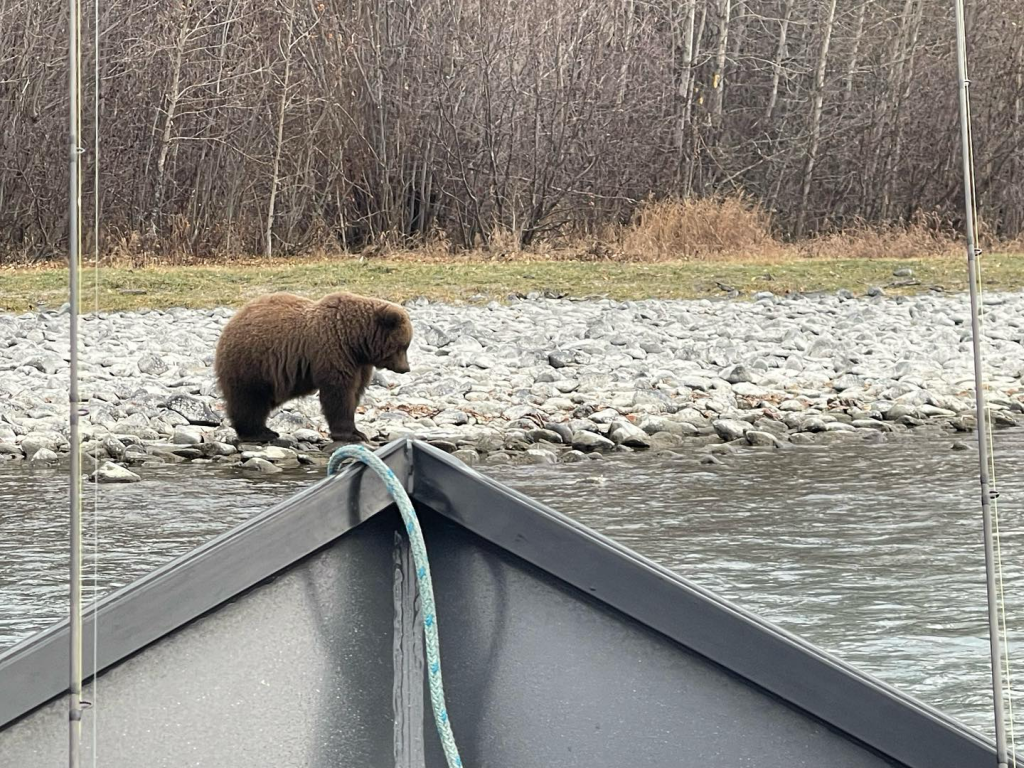
Beyond understanding bear behavior, adopting proactive safety measures is important when fishing in the bear country.
Here’s a breakdown of the essential tips to keep in mind:
1. Make Your Presence Known
- Be Vocal: Talk loudly, sing, or make noise while fishing, especially in areas with limited visibility or dense vegetation. This alert bears to your presence, reducing the likelihood of a surprise encounter.
- Use Bear Bells: Consider carrying a bear bell or attaching one to your fishing gear. The constant ringing will act as an auditory signal, announcing your presence to any bears in the vicinity.
- Fish in Groups: There’s safety in numbers. Bears are less likely to approach a group of people than a lone individual. Whenever possible, fish with friends or family or consider joining a guided fishing tour.
2. Store Food and Attractants Securely
- Use Bear-Resistant Containers: Store all food, fish remains, and other scented items, e.g., toiletries and cooking supplies, in bear-resistant containers or canisters. These containers are designed to prevent bears from accessing their contents, reducing the risk of attracting them to your campsite.
- Choose a Secure Storage Location: Store your bear-resistant containers in a designated area away from your tent and sleeping area. Ideally, hang them from a tree branch at least 10 feet off the ground and 4 feet away from the trunk.
- Maintain a Clean Campsite: Clean up all food scraps and spills immediately, and dispose of waste properly in designated bear-proof receptacles. Avoid leaving any food or scented items unattended, even for a short period.
3. Fish Responsibly
- Clean Fish Away from Camp: Avoid cleaning fish near your campsite or in areas where bears are likely to frequent. The scent of fish can attract bears from a distance, so it’s best to clean your catch further downstream or at a designated cleaning station.
- Dispose of Fish Waste Properly: Dispose of fish carcasses and entrails responsibly. Burying them deep in the ground, at least 4 feet deep, or disposing of them in bear-proof containers can help prevent bears from accessing them and associating your campsite with food.
4. Be Observant and Aware
- Scan for Signs of Bears: Pay attention to your surroundings and be vigilant for signs of bear activity, e.g., tracks, scat, or overturned rocks. These signs indicate that bears are present in the area, and you should exercise extra caution.
- Listen and Smell: Be aware of any unusual sounds or smells, e.g., rustling in the bushes or a strong fishy odor. These could be signs of a nearby bear.
- Maintain a Safe Distance: If you see a bear in the distance, alter your route to avoid approaching it. Never attempt to approach or feed a bear, as this can lead to dangerous situations.
5. Carry and Know How to Use Bear Spray
- Effective Deterrent: Bear spray is a highly effective deterrent against aggressive bears. It’s a non-lethal way to protect yourself in a bear encounter.
- Accessibility is Key: Carry bear spray in a readily accessible location, such as on your belt or chest harness. Make sure it’s within easy reach in case of an unexpected encounter.
- Practice Makes Perfect: Familiarize yourself with how to use bear spray before your trip. Practice removing the safety clip and aiming the spray in a safe environment so you’re prepared to act quickly and effectively if needed.
The Benefits of Choosing a Guided Fishing Trip
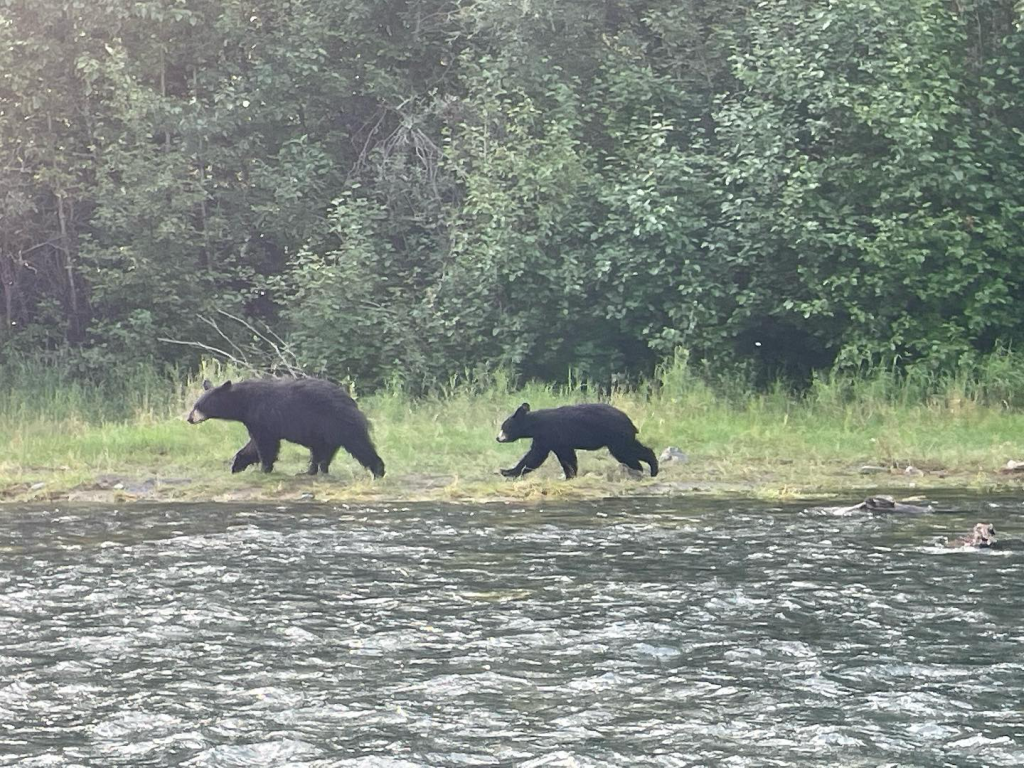
When venturing into the bear country, the peace of mind that comes with a guided fishing trip is invaluable. Experienced Kenai River fishing guides aren’t just experts in tracking down the best fishing spots and techniques but also in navigating the wilderness safely. Their knowledge of bear behavior, local trails, and potential danger zones provides an added layer of security that’s hard to match when exploring the Kenai River alone.
Fishing guides prioritize the safety of their guests. They’re trained to identify signs of bear activity, understand their movements, and take preventative measures to avoid encounters. Should an unexpected situation arise, they have the experience and the tools, including bear spray and communication devices, to handle it effectively and ensure everyone’s well-being.
Respect the Alaskan Wildlife
The Kenai River and its surrounding wilderness represent a wondrous ecosystem. This remarkable landscape is home to a diverse array of wildlife, from majestic bald eagles and playful river otters to the iconic Alaskan bear.
As visitors to this pristine environment, we have a responsibility to respect these creatures and their habitat, ensuring their well-being and preserving this natural wonder for generations to come.
Be mindful of your impact on the environment. Stay on designated trails, avoid disturbing vegetation, and dispose of waste properly. Leave No Trace principles are essential for preserving the Kenai River’s pristine beauty and ensuring that future generations can experience its wonders.
Enjoy a Safe and Successful Fishing Adventure on the Kenai
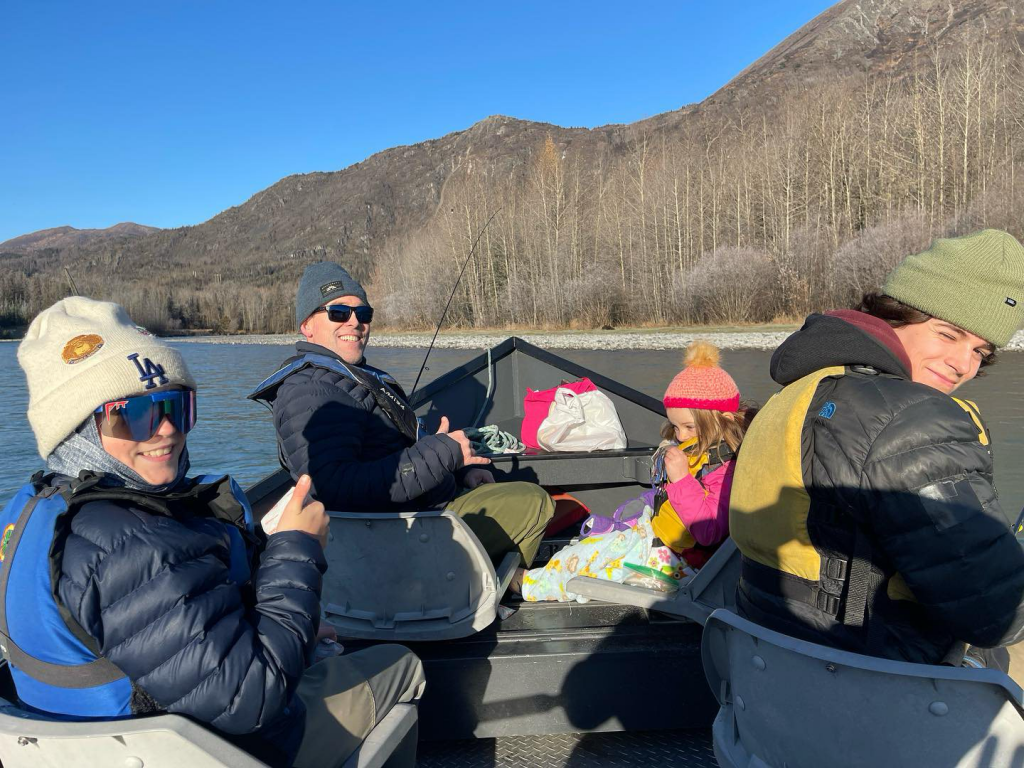
At Jason’s Guide Service, we prioritize your safety and the preservation of Kenai’s ecosystem. Our seasoned Kenai River fishing guides are well-versed in bear safety and can lead you to the most productive fishing spots while minimizing the risk of encounters.
Embrace the beauty of the Kenai River, cast your line with confidence, and create memories that will last a lifetime. Book now!

